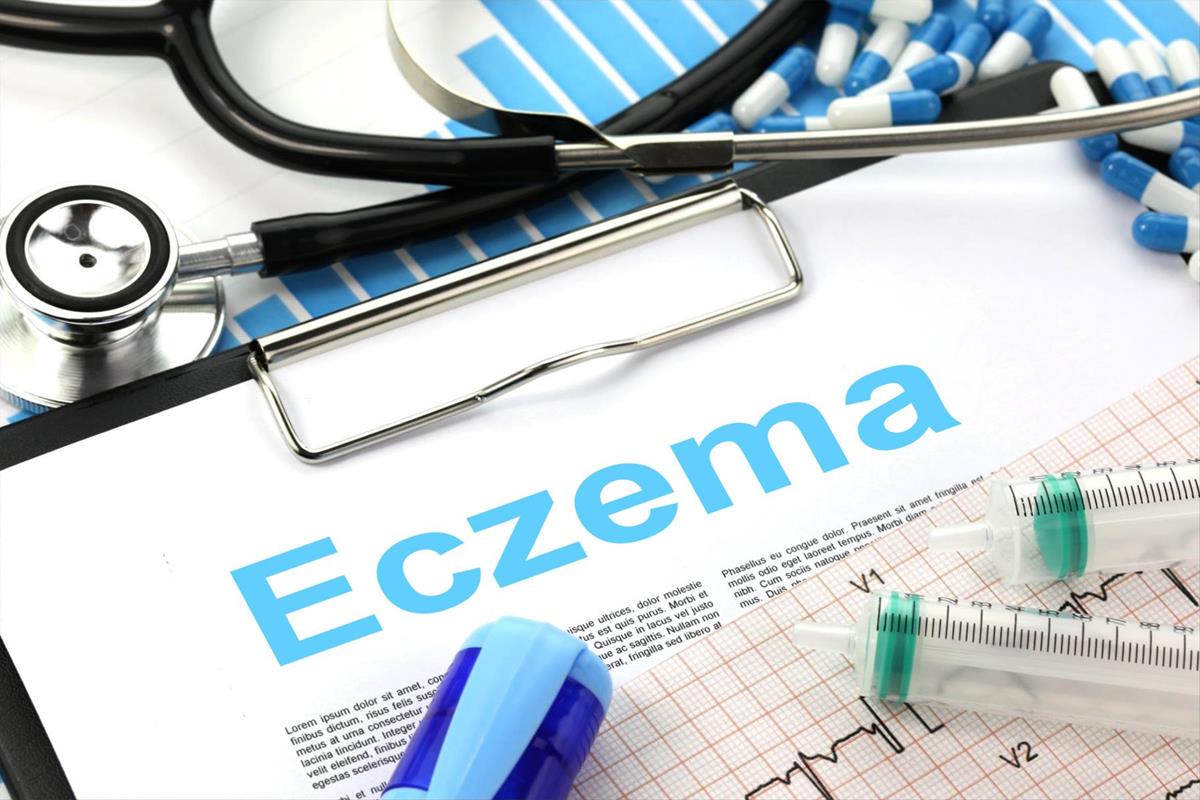Eczema is a condition that causes inflamed, itchy, and cracked patches on the skin. Then rough patches may have cause blisters in some types of eczema. The disease affects 31.6 million or 10% of the U.S population.
The most common type of eczema is atopic dermatitis, used to refer to a collection of conditions attached to the immune system. These conditions include atopic dermatitis, asthma, and hay fever. Eczema is mainly caused by certain types of foods and environmental factors. The non-contagious condition can be caused by exposure to certain soaps, pollen, and fragrances.
Symptoms of eczema vary depending on the person’s age, although are very vulnerable. Atopic dermatitis causes dry, scaly, and flushing skin. The skin becomes itchy, open, and crusted. People with darker skins may display different symptoms. The condition is most prevalent in children below the age of 5 years.
In children, the condition causes rashes on the scalp and cheeks. It also causes rashes that leak fluid with extreme itchiness.
Types of Eczema
Types of Eczema include:-
Atopic dermatitis
This is the most common type of eczema and often starts in childhood and fades away as one grows. Atopic dermatitis falls in a class called atopic triad that also includes asthma and hay fever. This condition occurs when the skin’s ability to protect against irritants and allergens is weakened. Other conditions that cause atopic dermatitis are dry skin, genes, problem with the immune system, and environmental factors.
Contact dermatitis
These are red, irritating skin spots that are caused by touching some things. This can be because of an allergic reaction or coming into contact with an irritant substance like bleach, detergents, paints, latex, and nickel. Its symptoms include red, burning, and itchy skin. Itchy bumps and fluid-filled blisters on the skin.
Dyshidrotic eczema
Dyshidrotic eczema appears in the form of small blisters on the hand and feet and is prevalent in women than men. Its symptoms include fluid-filled blisters on the finger, palms, toes, and soles. It is caused by allergic reactions, damp feet and hands, stress, and exposure to chemical substances like cobalt and nickel.
Hand eczema
This type of eczema affects only hands. You can contract this disease when you work on jobs like cleaning or hairdressing that involve the use of chemicals.
Neurodermatitis
This is related to atopic dermatitis and causes thick, scaly patches to form on the skin. It mainly appears in people who have other types of eczema.
Nummular eczema
This causes round-coin shaped spots on the skin. It causes formation of round, coin-shaped, itchy spots on the skin. This type of eczema is caused an allergic reaction or reaction to an insect bite.
Stasis dermatitis
This is caused by a weakened vein that causes fluids to leak into the skin. The fluid causes redness, swelling, itching, and pain. Its symptoms include swelling of the lower parts of the legs, heaviness in the legs, varicose veins, and developing open sores.
Stasis dermatitis is caused by problems in blood flow in the lower legs. Blood can accumulate in the lower parts if valves that push blood up to the heart malfunctions.
Treatments for Eczema
Cases of eczema are always moderate and always disappear with a little moisture on the skin. However, in cases of severe cares, it is advisable to seek a doctor’s advice as early as possible. Diagnosis of eczema requires a review of one’s family history and an examination of the patches to rule out other skin conditions.
There are millions of people who live with eczema. It is itchy and painful, although there are treatments that can help keep then skin health and prevent persistent outbreaks. The first line of managing eczema is understanding the type and symptoms.
It is also advisable to avoid irritants and to regularly moisturize your body with creams. Use a towel to dry your body to prevent it from cracking when it dries out.


